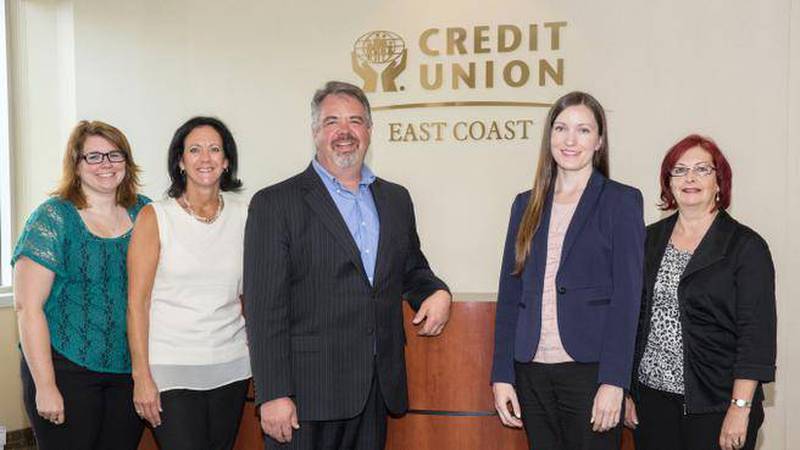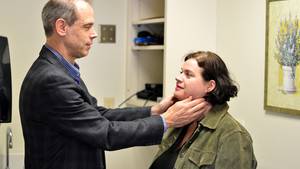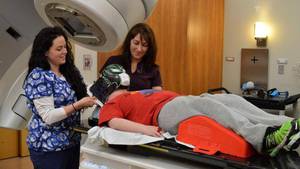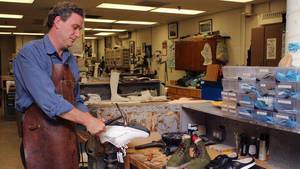Thanks to donors to the QEII Foundation, a $1.9-million outpatient facility overhaul is coming to the VG site of the QEII. This major improvement will reduce wait times and allow for more patients to be treated in a comprehensive, inclusive environment.
This change came about from a task force struck in spring 2011 to look at how outpatient services were delivered at the Halifax Infirmary site with an eye to improving the patient experience. With those clinics now re-aligned by finding efficiencies in how space is used, the same attention is being given to the seven clinics that are operating in the QEII’s Dickson building on the VG site.
The clinics, including dermatology, endocrinology, gastroenterology, immunology, general internal medicine, general surgery and infectious diseases, are scattered throughout the VG site.
The re-design will bring all of the clinics together in one location at the Dickson building.
“It will make it much easier for patients to come in, register and just go to one specific area rather than trying to find their way around,” says Peter MacDougall, a health services director at the QEII, who is heading the project steering committee.
Peter says at the moment, the various clinics “own” their space, meaning even if patients aren’t being seen on certain days of the week, that space goes unused.
“Our intention is to make the space free-flowing so that all of our service space can be used by another service,” explains Peter. “One of the challenges we hear from the patients is their waiting time, so if we’re able to do this and utilize the space collectively, we will have some impact on our wait lists.”
Wait times vary depending on the clinic. Between the seven specialties, there is an average of 60,000 visits a year. Endocrinology and gastrointestinal visits make up about a third of that clinic population. Clinics run about 250 days a year.
If the re-design works the way it’s intended, Peter says more people will be able to be treated on an outpatient basis.
“Part of our challenge is some people remain in the hospital when they don’t need to be here. In general surgery for example, we may have people who are in beds getting a treatment that could be done on an outpatient basis but they can’t get in...so there may be an opportunity to discharge someone and get them into a clinic and have those procedures done as an outpatient rather than staying in the hospital.”
Peter says what’s envisioned is a streamlined process, whereby patients swipe their health cards at the first floor registration kiosks and from there take the elevator to the fourth floor where they’re greeted and taken to their clinics from a central waiting room.
With some of the clinics currently occupying some of the oldest, un-renovated space at the VG site, Peter says an overhaul will result in a more open space, rather than having patients navigate hallways and tuck into corners.
“It will be a square with rooms around the outer perimeter, with a nursing station, exam rooms, and waiting areas in an open, brand new space, with new equipment. We’re listening to what patients are telling us and we’ll include some of the patients in the planning to provide us with some feedback around the flow and what their challenges are, so we can get patient feedback around what we’re missing or what we can do better,” says Peter.
Peter is optimistic that work on the central waiting room could begin before the end of the year, with a large part of the project complete over the next six to 14 months.
East Coast Credit Union is one of the organizations that helped fund the project through the QEII Foundation. President and CEO Ken Shea says the credit union had been looking to work with the QEII Foundation for some time and when one of their board members, whose wife was undergoing cancer treatments at the VG site, brought the project to their attention they knew it was a good fit.
East Coast Credit Union donated $25,000 to the project and issued a challenge for the community to match their gift. The community rose to the occasion and, together, they raised a total of $68,175 to strengthen outpatient care at the QEII.
“Our health care is a very important thing to all of us and often public/private partnerships are a good way to make things happen faster. In this case, hopefully it will create a great environment for patients to come and access the many services that they need.” says Ken. “I think it’s a great project. The more comfortable we can make the surroundings the better it is for the individuals involved.”
Atlantic Canada’s first integrated outpatient facility will set new standards in outpatient comfort, privacy and speed of service.








